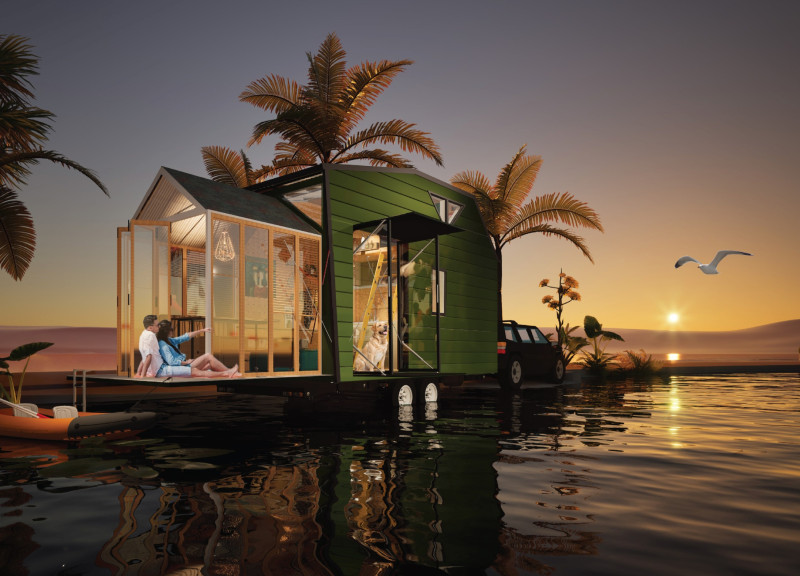5 key facts about this project
At its core, the project represents a seamless interaction between built and natural environments. The design philosophy prioritizes functionality, ensuring that the spaces serve their intended purposes effectively. This focus is evident in the strategic layout, which incorporates both private and public areas to foster interaction among users. The architectural flow invites movement through its carefully considered pathways and connections, making it accessible to a diverse range of visitors.
The essential components of the project include various designated spaces, each crafted to fulfill specific functions while promoting a sense of community. Areas for gathering and collaboration are central to the design, encouraging social engagement and fostering relationships among users. The incorporation of flexible spaces allows for adaptability, accommodating diverse activities that range from formal events to informal gatherings. This versatility is a key design feature that enhances the overall functionality of the architecture.
Materiality plays an important role in this project, as it not only contributes to the aesthetic but also speaks to the values of sustainability and resilience. A diverse palette of materials, including locally sourced stone, timber, and glass, creates a harmonious relationship with the environment. These materials have been selected for their durability as well as their ability to age gracefully, ensuring the architecture remains relevant and functional over time. The use of large windows and glass façades enhances natural light penetration, reducing reliance on artificial lighting and creating a pleasant indoor climate.
Unique design approaches within the project include the integration of green roofs and living walls, which serve multiple purposes. Not only do they add to the visual appeal of the architecture, but they also contribute to environmental performance by enhancing insulation and promoting biodiversity. The landscaping surrounding the building complements the architecture, incorporating native plants that require minimal maintenance and water, thus aligning with sustainable practices.
The architectural design also considers the building’s energy efficiency, featuring innovative systems for heating, cooling, and energy generation. These aspects demonstrate a commitment to reducing the overall ecological footprint while ensuring occupant comfort. The architectural solutions employed in the project maximize energy performance without compromising the aesthetic or functional goals.
Furthermore, the project fosters a connection to the local community by incorporating public art installations and interactive features. This engagement with the surrounding area encourages a sense of ownership and pride among residents, solidifying the building's role as a community hub. The thoughtful integration of these elements reveals an understanding of the importance of place and identity within architectural practice.
As the project progresses toward completion, it becomes evident that the design encapsulates a broad spectrum of architectural ideas that address contemporary challenges. The combination of effective space planning, sustainable material choices, and community-focused design creates a model for future projects seeking to balance architectural integrity with social responsibility.
For those interested in delving deeper into this project, exploring the architectural plans and sections will provide additional insights into the design process and thoughtful considerations that have shaped its development. The interplay of various architectural elements reveals a comprehensive approach to modern architecture, making this project a valuable reference point for professionals and enthusiasts alike. Engaging with these resources will enhance understanding of the innovative practices that inform this exemplary architectural endeavor.























